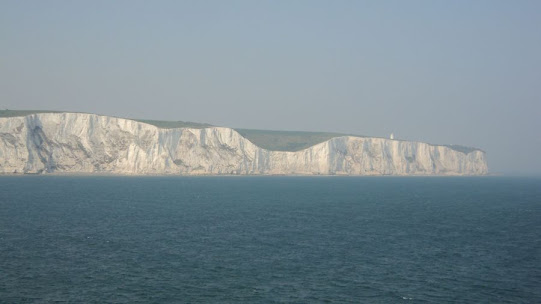The Cliffs of Dover are a striking natural landmark located on the southeastern coast of England, rising majestically to heights of up to 350 feet. Known for their iconic white chalk formations, these cliffs stretch for about 8 miles along the English Channel, providing stunning views of the sea and the French coastline in the distance.
Historically significant, the cliffs have served as a symbol of British resilience, especially during wartime, and are often associated with the phrase "the white cliffs of Dover." Visitors are drawn not only to their breathtaking beauty but also to the rich history and wildlife that thrive in the surrounding areas.
Whether viewed from land or sea, the Cliffs of Dover remain a captivating sight, steeped in both natural wonder and cultural heritage.
For more photographs of the Cliffs of Dover click here or view on You Tube










